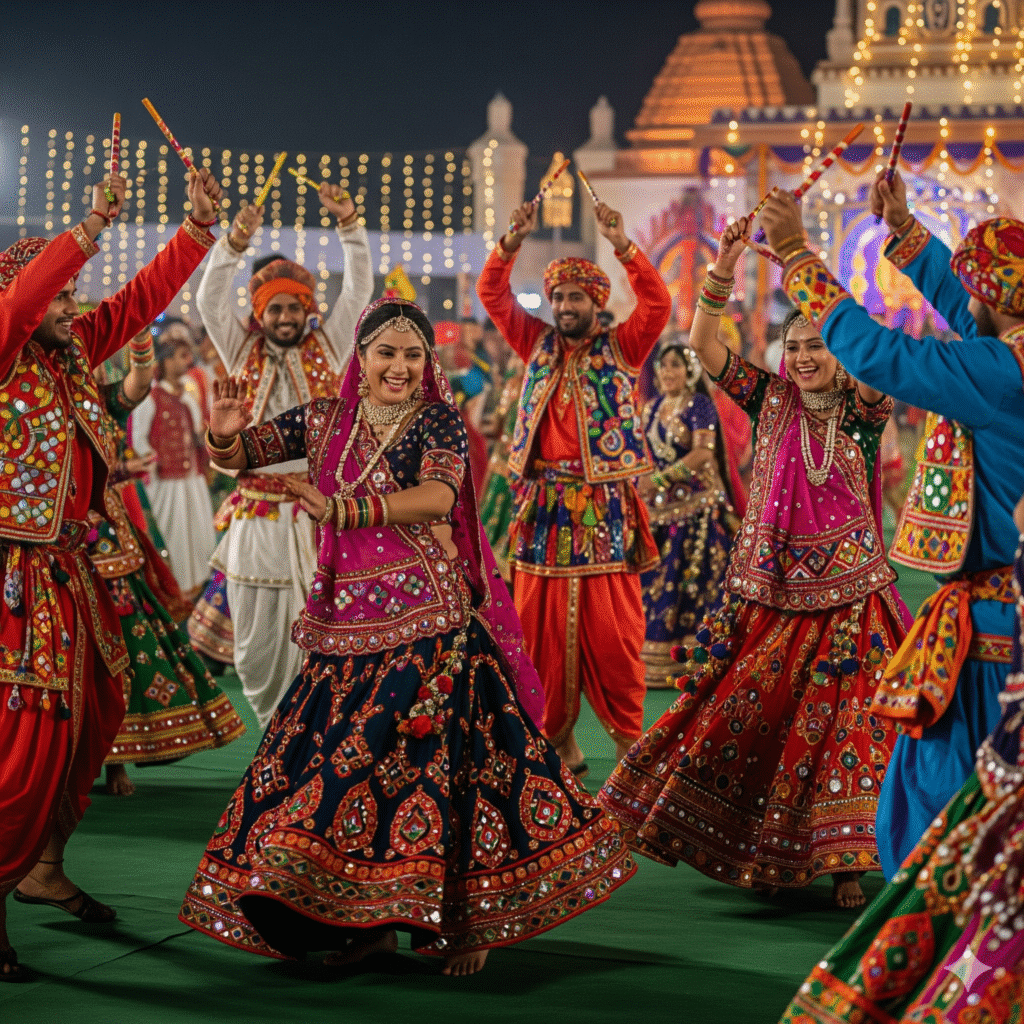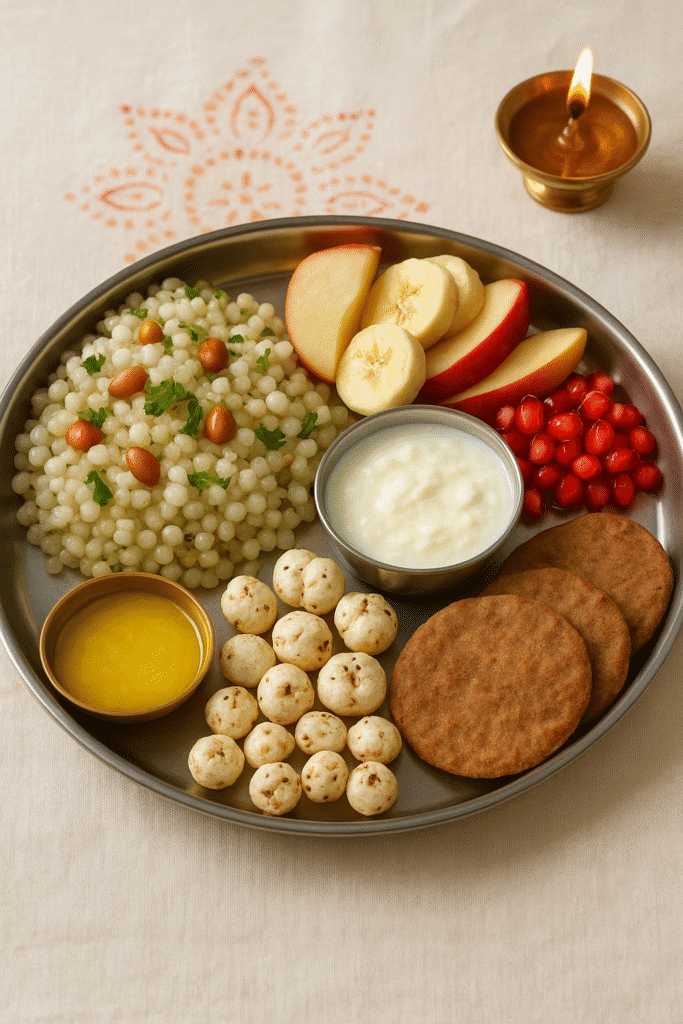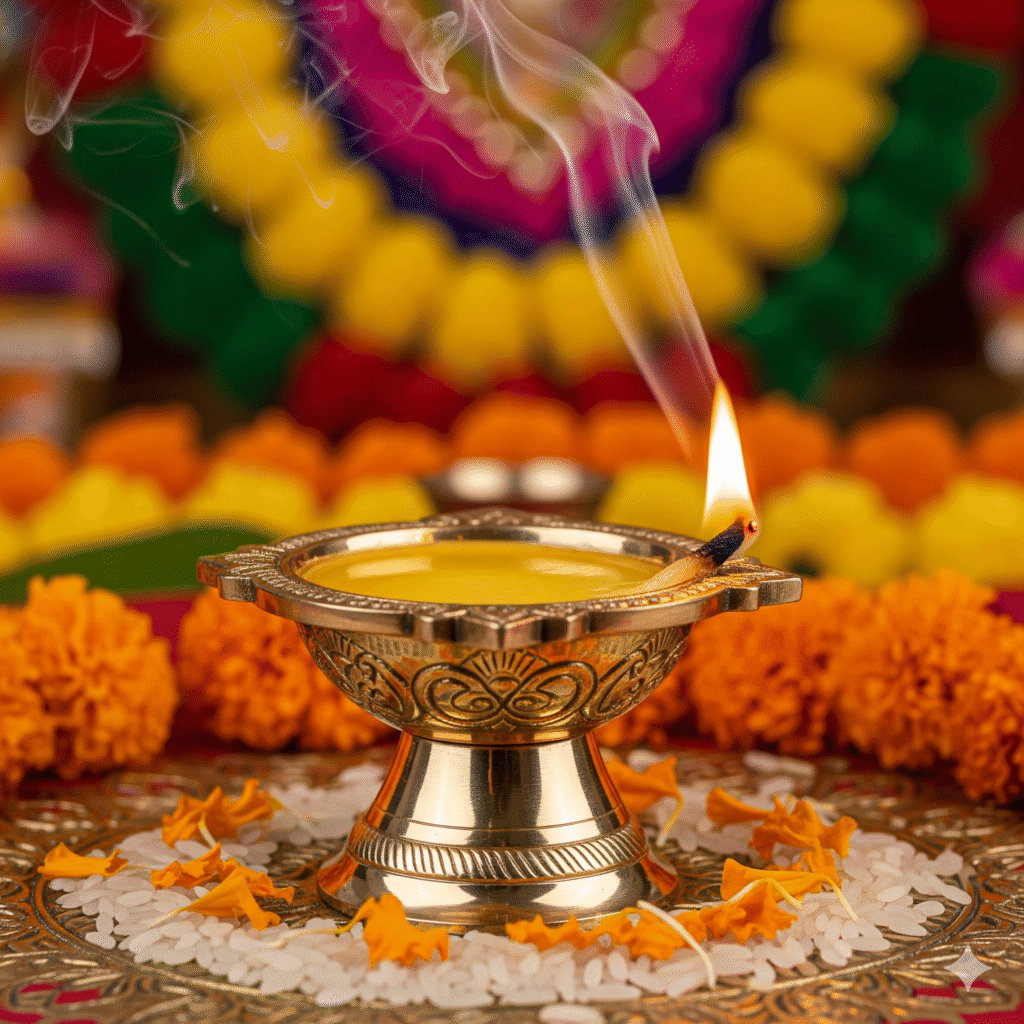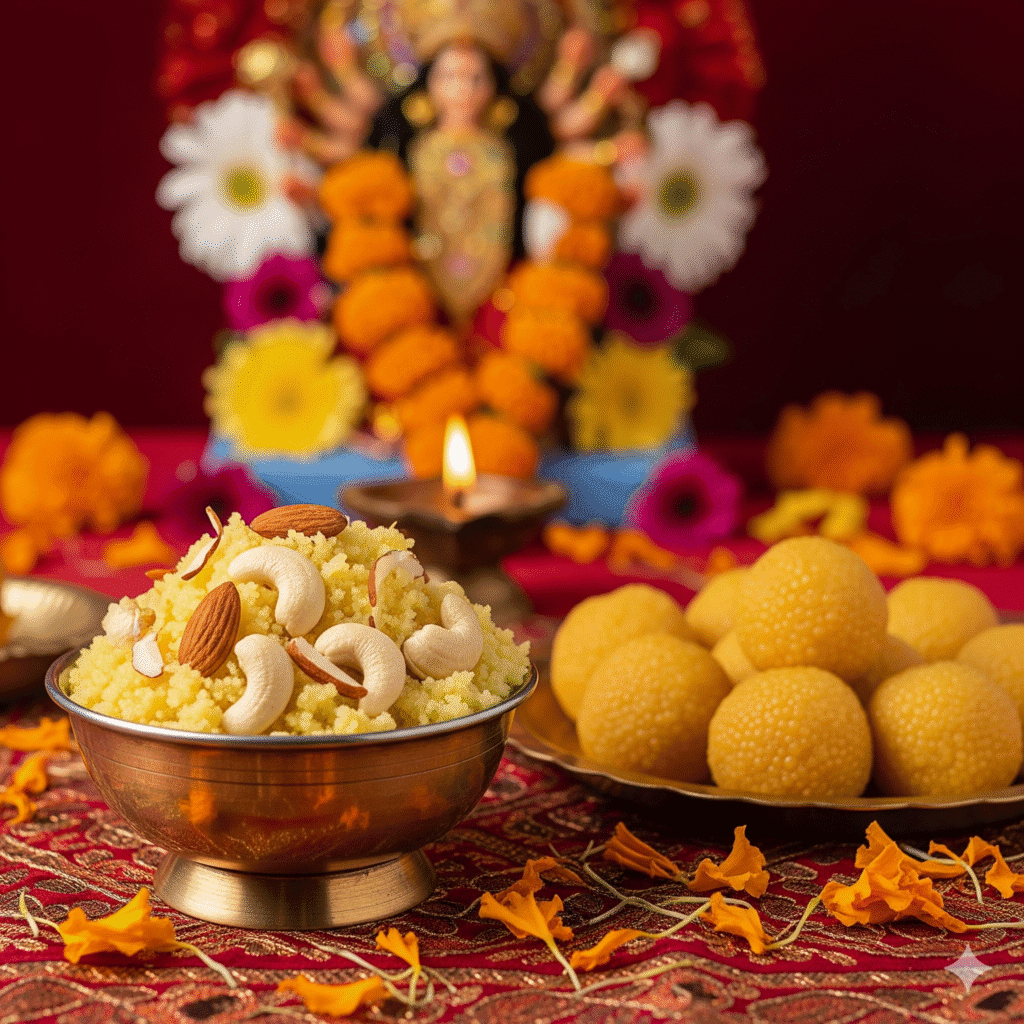Every year when Navratri begins, I feel as if the whole atmosphere changes overnight. Streets are decorated, homes are lit, and the sound of dhol and aarti fills the evenings. Even if you’re not someone who fasts, you can’t escape the energy of Navratri. It’s nine nights of devotion, music, discipline, and joy.
For me, Navratri has always been tied to food and rituals at home. My grandmother would wake up early, light a diya filled with pure A2 ghee, and make the kitchen smell of fresh halwa or kuttu puris. She would always remind us, “Navratri is not about eating less, it’s about eating pure.” And she was right.
The Meaning Behind Navratri
Navratri literally means nine nights. Each night celebrates one form of Goddess Durga. My mother used to tell me stories of how each form represents a quality we need in our lives—courage, patience, wisdom, peace.
That’s why fasting is such a big part of Navratri. It’s not just about skipping regular meals; it’s a way of cleansing the body and focusing the mind. When you eat simple, sattvic food during these nine days, your body feels lighter, and your thoughts clearer.

Food During Navratri – Simple Yet Special

I still remember the first time I fasted as a teenager. I thought, “How hard can it be?” But by afternoon, I was starving. My grandmother smiled and served me a bowl of sabudana khichdi cooked in A2 ghee. It was light, flavorful, and surprisingly filling. That’s when I realized ghee wasn’t just an ingredient—it made fasting easier.
During Navratri, grains like wheat and rice are avoided. Instead, we cook with:
- Sabudana (tapioca pearls)
- Kuttu flour (buckwheat)
- Singhara (water chestnut) flour
- Potatoes, fruits, and nuts
Now here’s the secret: when these foods are cooked in A2 ghee, they taste better and also digest more smoothly. Even Ayurveda says that ghee balances Vata and Pitta doshas, which is why it’s perfect for fasting days.
The Rituals Where Ghee Shines
One of the most beautiful sights in Navratri is the akhand jyot—a ghee diya that burns continuously for nine days. As a child, I would sit and watch its flame, steady and glowing, no matter how strong the breeze outside. My grandmother would say, “This diya keeps the blessings of Maa Durga alive in the house.”
Other rituals where ghee plays a big role:
- Havan (fire ritual): Ghee poured into the sacred fire is believed to purify the environment.
- Bhog (offering to Goddess): Sweets like halwa or laddoos are always made with ghee.
- Prasad: Whether it’s sheera or kheer, prasad without ghee feels incomplete.
Even now, when I prepare bhog for Navratri, I make sure to use A2 Gir Cow Ghee because it feels pure and sattvic, just the way traditions intended.

These days, supermarket shelves are full of ghee, but my trust has always been in A2 Gir Cow Ghee. Here’s why:
- It’s made through the bilona method, where curd is churned to extract butter before being slowly simmered into ghee.
- It’s free from chemicals and preservatives.
- It contains A2 beta-casein protein, which is easier to digest than the A1 protein found in commercial ghee.
- The taste is earthy, rich, and wholesome—very different from packaged ghee.
When you’re fasting or performing puja, purity matters. Using A2 ghee connects you to tradition in the most authentic way.
Personal Health Benefits I’ve Noticed
I’ll be honest—I didn’t always believe in all the “benefits” people spoke about. But when I started adding A2 ghee to my Navratri diet, I actually noticed changes:
- My energy levels stayed steady even without grains.
- Digestion was smoother; no heaviness at all.
- I didn’t get the usual fasting headaches.
- A spoon of ghee in warm water in the morning made me feel fresh.
It wasn’t magic—it was just the body getting the right kind of fat, the kind our ancestors trusted for centuries.
Two Navratri Recipes with A2 Ghee
1. Sabudana Khichdi with Ghee
- Soak sabudana overnight.
- Heat 2 tsp of A2 ghee.
- Add cumin, green chili, and roasted peanuts.
- Toss in sabudana and cook till translucent.
- Garnish with coriander
2. Kuttu Poori with A2 Ghee
- Mix kuttu flour with mashed potatoes and rock salt.
- Knead into a dough.
- Roll small puris and fry in ghee.
- Serve with vrat-friendly aloo sabzi.
Why Ghee is Called “Sattvic”
In Indian culture, foods are divided into tamasic (dull), rajasic (stimulating), and sattvic (pure). Ghee is sattvic, which means it nourishes both the body and the mind. That’s why saints, yogis, and our elders always considered it special.
During Navratri, when the focus is on purity and devotion, sattvic foods like fruits, milk, and ghee help you stay aligned with the spirit of the festival.
Final Thoughts
Navratri is not just nine nights of dance and fasting—it’s about pausing, purifying, and reconnecting with our roots. From the diya that burns in the puja room to the food on our plates, A2 ghee is quietly present everywhere, tying together health, tradition, and devotion.
So this Navratri, light your diyas with pure ghee, prepare your bhog with love, and let your meals nourish not just your body, but also your spirit.
✨ Wishing you and your family a Shubh Navratri filled with health, happiness, and divine blessings.

Frequently Asked Questions About Navratri and A2 Ghee
Can we eat ghee during Navratri fasting?
Yes, absolutely. In fact, ghee is considered sattvic, which means it’s pure and suitable for fasting. Many vrat recipes like sabudana khichdi, kuttu poori, or even simple fruits and milk taste better when combined with a spoon of ghee. It also keeps you full for longer.
Why is A2 ghee preferred during Navratri?
A2 ghee, especially from Gir cows, is made using the traditional bilona method. It’s pure, chemical-free, and rich in nutrients. Since Navratri is about purity in both food and rituals, A2 ghee aligns perfectly with the spiritual energy of the festival.
Can we light a diya with A2 ghee?
Yes. Lighting a diya with pure A2 ghee is considered very auspicious. Many families keep an akhand jyot (uninterrupted ghee lamp) burning throughout the nine days of Navratri for blessings, prosperity, and protection.
Is ghee heavy to digest during fasting?
Not at all, when taken in the right amount. Unlike oils, ghee is easier to digest and even helps in absorbing nutrients from other foods. That’s why Ayurveda recommends adding a little ghee to fasting meals.
Can prasad be made without ghee?
Technically yes, but it won’t carry the same traditional purity. Prasad made with ghee is considered sacred and more sattvic. Whether it’s halwa, sheera, or laddoos—ghee is what makes it truly divine.
